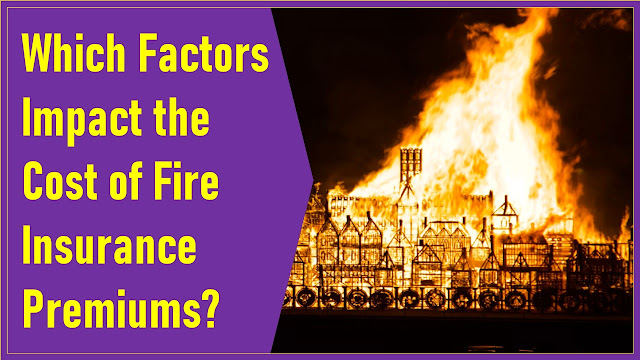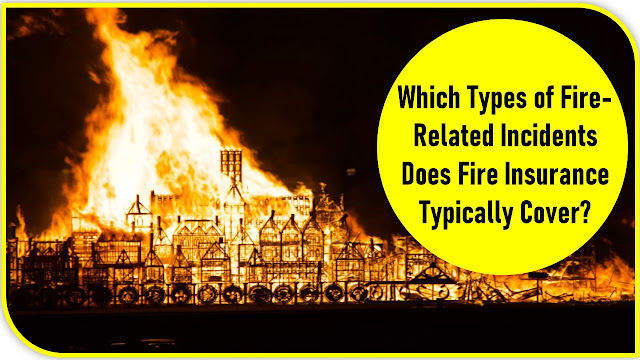Which Factors Impact the Cost of Fire Insurance Premiums?

Introduction
In this article, I’ll delve into the intricate world of fire insurance premiums, shedding light on the multifaceted factors that influence the cost of this crucial financial safeguard. Fire insurance is not merely a precautionary measure but a financial lifeline that can protect individuals, homeowners, and businesses from the devastating aftermath of fires. Understanding the determinants of fire insurance premiums is essential for making informed decisions about coverage, as well as for maintaining financial stability in the face of unforeseen calamities.
As we embark on this exploration, we’ll unravel the intricate web of variables that underpin fire insurance pricing. From the location of your property to its construction materials, from fire prevention measures to the insurer’s risk assessment, a myriad of elements come into play when calculating fire insurance premiums. By dissecting these factors, you’ll gain valuable insights into how to mitigate costs and ensure that your fire insurance coverage remains both comprehensive and affordable. So, let’s navigate this complex terrain together and empower you with the knowledge needed to make prudent choices in safeguarding your assets from the ravages of fire.
- Location and Geographic Risk Assessment
- Building Construction and Materials
- Fire Safety and Prevention Measures
- Insurance Policy Coverage and Deductibles
- Claim History and Insurance Provider
- Market Trends and Regulatory Factors
Location and Geographic Risk Assessment.
The location of your property plays a pivotal role in determining the cost of fire insurance premiums. Insurers assess the geographic risk associated with your area to estimate the likelihood of a fire occurring. Properties in regions prone to wildfires, forested areas, or densely populated urban centers with limited fire department access may face higher premiums. These areas have a heightened risk due to factors like dry climates, vegetation proximity, and potential fire hazards.
Moreover, the distance from your property to the nearest fire hydrant and fire station is a crucial consideration. Homes or businesses situated closer to these resources often benefit from lower premiums as they can be better protected in the event of a fire. Therefore, when seeking fire insurance coverage, it’s essential to be mindful of your property’s geographic location and the associated fire risk, as it can significantly impact the cost of your premiums.
Building Construction and Materials.
The construction and materials used in your building are key determinants of fire insurance premiums. Insurance providers assess the structural integrity and fire resistance of your property to gauge its vulnerability to fire damage. Buildings made from fire-resistant materials like concrete or brick generally receive lower premiums compared to those constructed with wood or other flammable materials.
Additionally, the presence of fire mitigation features, such as fire-resistant roofing, sprinkler systems, and smoke detectors, can also influence your premiums positively. Investing in these safety measures not only enhances the protection of your property but can lead to cost savings on insurance premiums in the long run. Therefore, when considering fire insurance, it’s crucial to evaluate your building’s construction and materials and take proactive steps to minimize fire risk to potentially reduce your premium costs.
Fire Safety and Prevention Measures.
Fire safety and prevention measures implemented on your property are instrumental in shaping your fire insurance premiums. Insurance providers appreciate proactive steps taken to reduce fire risk, as they lower the likelihood and severity of fire-related claims. Installing fire extinguishers, fire alarms, and sprinkler systems can not only safeguard lives and property but also result in premium discounts.
Additionally, practicing good fire safety habits, such as safe storage of flammable materials and regular maintenance of heating and electrical systems, can positively impact your insurance rates. Insurers often reward responsible property owners who take steps to prevent fires. Therefore, investing in fire safety and prevention measures is not only a wise choice for protecting your assets but can also lead to potential cost savings on your fire insurance premiums.
Insurance Policy Coverage and Deductibles.
The extent of coverage you choose in your fire insurance policy directly affects your premium costs. Policies with comprehensive coverage, including protection against not only fire but also smoke damage, water damage from firefighting efforts, and additional living expenses during home repairs, typically come with higher premiums. On the other hand, more limited policies that cover only the basics may cost less but offer less comprehensive protection.
Deductibles also play a significant role. A deductible is the amount you agree to pay out of pocket before your insurance coverage kicks in. Policies with lower deductibles tend to have higher premiums, while those with higher deductibles usually come with lower premium costs. Selecting a higher deductible can reduce your premiums, but it also means you’ll have to cover a larger portion of the costs in the event of a fire-related claim. Balancing the coverage level and deductible to align with your risk tolerance and financial capabilities is essential when considering how it impacts your fire insurance premiums.
Claim History and Insurance Provider.
Your past claim history and choice of insurance provider significantly influence your fire insurance premiums. If you’ve filed multiple claims for fire-related incidents or other damages in the past, insurers may view you as a higher risk and charge higher premiums. Conversely, policyholders with a history of few or no claims may receive more favorable premium rates as they are considered lower risk.
The insurance provider you choose also matters. Different insurers have varying risk appetites and underwriting standards, which can result in different premium quotes for the same property. It’s essential to shop around and compare quotes from multiple providers to find the best balance between coverage and cost. Additionally, loyalty to a particular insurance company may yield discounts over time, so it’s worth considering the long-term relationship and potential benefits when selecting your insurance provider.
Market Trends and Regulatory Factors.
Mrket trends and regulatory factors exert a significant influence on the cost of fire insurance premiums. In recent years, the insurance industry has been grappling with the escalating impact of climate change on fire risks. Rising temperatures, prolonged droughts, and an increase in the frequency and severity of wildfires have led to an uptick in insurance claims related to fire damage. Consequently, insurers have adjusted their pricing models to account for these evolving risk landscapes.
Furthermore, regulatory factors at the local, state, and national levels can shape fire insurance costs. Building codes and regulations that mandate specific fire prevention and safety measures can impact premium rates. Properties that comply with these codes may enjoy lower premiums due to reduced fire risk. Conversely, older or non-compliant structures may face higher costs to compensate for their elevated risk profile. Additionally, government policies and initiatives aimed at incentivizing fire mitigation efforts can also influence insurance premiums.
Conclusion.
I hope this exploration into the various factors impacting the cost of fire insurance premiums has provided you with valuable insights. Fire insurance is not merely a financial obligation but a crucial shield against the devastating consequences of fire-related disasters. To conclude, it’s evident that several interconnected elements come into play when determining the cost of your fire insurance coverage.
From the geographic risk of your property’s location to the materials used in its construction, from your fire prevention efforts to the extent of coverage in your policy, each factor contributes to the overall premium calculation. Moreover, your claims history, choice of insurance provider, and external market trends and regulations also play pivotal roles. By understanding these factors and making informed decisions, you can not only secure comprehensive protection for your assets but also manage the cost of fire insurance premiums effectively.







